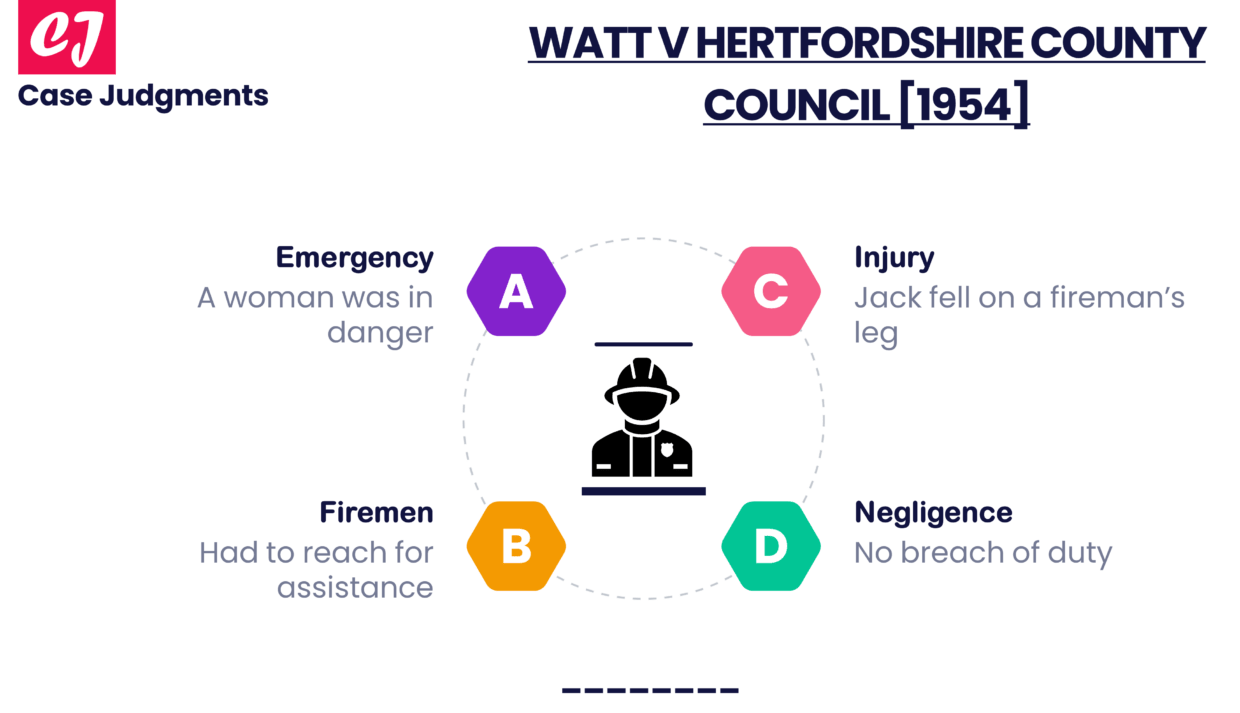
Watt v Hertfordshire County Council [1954]
Case name & citation: Watt v Hertfordshire County Council [1954] 1 WLR 835
- Court and jurisdiction: Court of Appeal, England & Wales
- Decided on: 07 May 1954
- The bench of judges: Lord Justice Singleton, Lord Justice Denning, and Lord Justice Morris
- Area of law: Negligence; Standard of care
Case Overview
Watt was a fireman who was injured while performing his duty. The incident caused a heavy jack to fall onto his leg. The Court ruled that the life of the person that had to be saved was more important than anything else and that the Council was not liable for tort or negligence which caused injuries to the fireman.
Facts of the case (Watt v Hertfordshire County Council)
An incident that put a woman’s life in danger occurred approximately 200–300 yards away from the fire department. In order to save her, firemen had to lift a lorry, which was only possible with the help of specialized equipment (a jack), which should have been transported to the scene with the assistance of special machinery, but this machinery was not available at the time of the accident. Therefore, the chief of the fire department gave the order to make use of other transport methods in order to get the equipment to the location. However, there was no secure method for doing so. The firemen were told to hold the equipment in order to prevent it from falling. But while travelling to the scene, the equipment fell and injured the complainant’s leg.
Issue
The fireman who filed the claim alleged that the fire department was at fault for negligence because inappropriate machinery was used while he was performing his duty. Though this was true, the Court took the following decision.
Judgment of the Court in Watt v Hertfordshire County Council
The claim was rejected due to the fact that in the event of an emergency, the only way the woman could have been saved was with the assistance of the equipment and vehicles that had been used. These were reasonable actions that corresponded to the level of danger that was posed to the life of the injured woman. The fire department was not held liable for a tort or negligent act, and they did not violate any standards of care.
Key point emerging from the case
The case is authority for……
The social utility of the activity being undertaken by the defendant is a factor that is required to be taken into consideration in order to determine whether the defendant has acted in the manner expected of a reasonable person and, as a result, whether the defendant has breached their duty of care. If the defendant is engaged in an activity that serves a socially beneficial purpose, then it is possible that they may be justified in taking greater risks.
List of references:
- https://academicexperts.com/cases/watt-v-hertfordshire-county-council.pdf
- https://www.johnwiley.com.au/highered/blaw/content110/case_summaries/watt_vs_hertfordshire.pdf
You might also like:
More from tort law:

